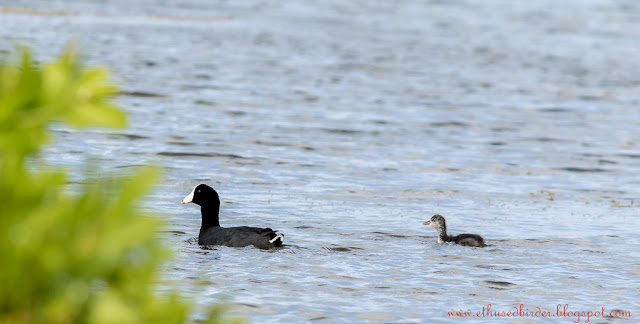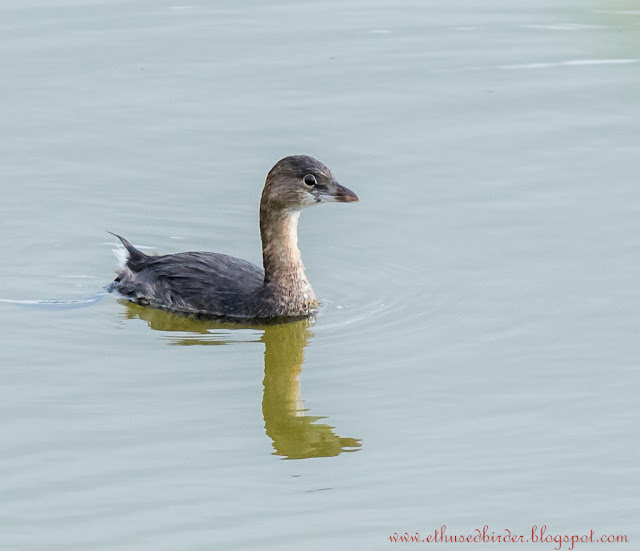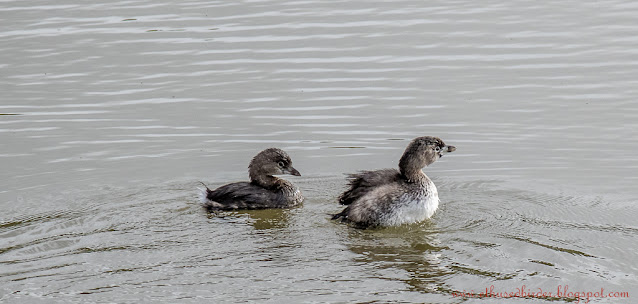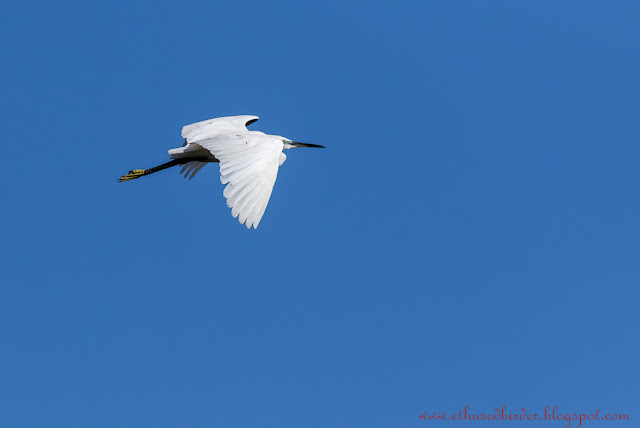In the second week since returning
to work after the Pause, I got out to a few of the birding locations I missed during
the first week. I was concentrating more
on photography, and becoming more familiar with the Canon 7D MKII which led to a
few impromptu photoshoots when finding willing feathered models, common or rare,
local or migrant, it mattered not. This
drive gave me a fair week of birding and photography, in which I tallied 43
species and captured many gigabytes of RAW images. The major stops I made were
at Oistins Fishing Complex, Redland, North Point, and Woodbourne Shorebird
Refuge (WSR) but also got images from across the island at common
"none-birding" locations.
On the afternoon of Monday 8th, I stopped at The Oistins
Fishing Complex, Christ Church, which is on the South Coast, to look for
seabirds. A few Laughing Gulls
(Leucophaeus atricilla) and Royal Terns (Thalasseus maximus) were perched on
one of the piers. The Royals were at the
far end of the pier, too far for the Canon EF-s
55-250mm. The Laughers, on the other hand, were much closer so I focused
on the one closest to me. It was an
adult in breeding plumage, showing its black head with a pronounced eye-ring.
 |
| Laughing Gull |
A beautiful Spotted
Sandpiper (Actitis macularius) also in breeding plumage drew my attention
away from the gulls and I was able to capture a few images before it
disappeared behind a bolder. |
| Spotted Sandpiper in breeding plumage |
The
next time out birding was on Wednesday afternoon (March 10th), but this time at the opposite end
of the island, North Point, St. Lucy. The wet area there has long dried up as we are now in the dry season but
a few birds, both native and migratory, can
normally be found along the tundra-like flats to the south of the wetland area. I saw 5 species of shorebirds, as I hiked along the rocky terrain.(Black-bellied Plover (Pluvialis squatarola), Semipalmated Plover (Charadrius semipalmatus), Sanderling (Calidris alba), Least Sandpiper (Calidris minutilla) and Semipalmated Sandpiper (Calidris pusilla)).
 |
| Least Sandpiper |
 |
| Black-bellied Plover |
 |
| Three Black-bellied Plovers at North Point |
The next day I made a short stop at one of the irrigation
ponds at Redland to check out an interesting-looking domestic duck that was
hanging around with Muscovy Ducks (Cairina moschata). It was a beautiful duck, probably Mallard (Anas platyrhynchos) mixed. Four Blue-winged
Teals (Spatula discors), two
males in breeding plumage, and two females were also on the pond along with a
few shorebirds.
 |
domestics Muscovy Duck
and other hybrid |
 |
| Solitary Sandpiper |
 |
| Male and Female Blue-winged Teals |
For the second week straight, Friday afternoon found me at the WSR. The light was not as good as it was last week but I still got a few images.
 |
| A remnant of the 100 Teals @ WSR, notice the Green-winged Teal leading the flight |
 |
| Solitary
Sandpiper |
 |
| comparison between Lesser (front) and Greater (rear) Yellowlegs |
I had no plans for birding on the weekends because some of the COVID restrictions were still emplace, but on Saturday 13th, I took my son to an appointment and while waiting for him I did a bit of drive by birding and photography in the area. Some of the highlight sightings and images included three Golden Warblers (Setophaga petechia) foraging among a grove of mature Acacia trees, and an Osprey (Pandion haliaetus).
 |
Yellow (Golden) Warbler can always be found in or around
Acacia trees |
 |
Zenaida Dove (Zenaida aurita) |
 |
Osprey |
























